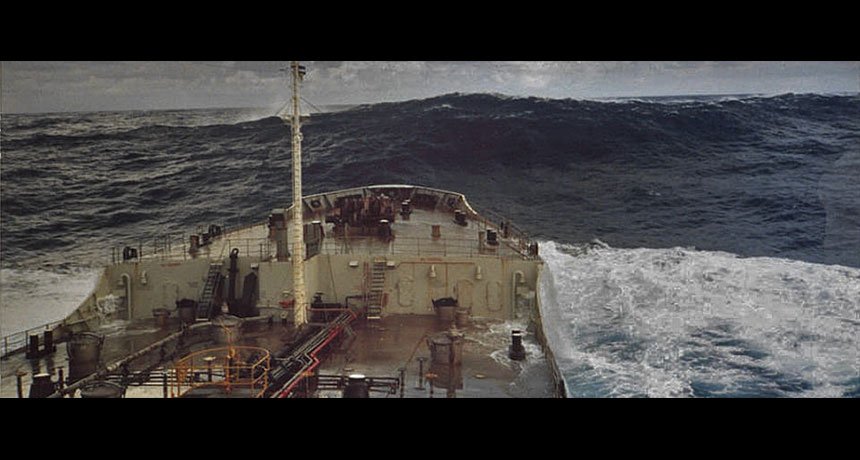
EXTREME SWELLS A rogue wave around 18 meters high continues on its way after crashing into a ship off the coast of Charleston, S.C.
NOAA
Sailors have long told remarkable stories of monstrous, ship-damaging waves that seem to come out of nowhere. But new research analyzing these rogue waves in and out of the ocean reveals that at least some of them are foreseeable.
A telltale set of conditions precedes the appearance of bright flashes in tabletop laser experiments that are similar to rogue water waves, researchers report in the May 29 Physical Review Letters. The results suggest that multiple processes, some more predictable than others, can lead to these extreme events. “People in the field have been waiting for something like this to be done,” says Mattias Marklund, a theoretical physicist at Chalmers University of Technology in Gothenburg, Sweden.
The findings could lead to advance warning systems. For now, scientists are interested in learning more about the sources and signatures of these mysterious waves.
Rogue waves were once considered less scientific curiosity than nautical legend à la kraken. But in 1995, an oil platform in the North Sea recorded the sudden appearance of a wave that towered about 26 meters, nearly the length of a basketball court. At the time, scientists thought a wave with that height and steepness should materialize only every 1,000 to 10,000 years.

To compare rogue waves in different environments, optical physicist Günter Steinmeyer of the Max Born Institute in Berlin and colleagues obtained data from Solli and from the North Sea platform. Steinmeyer and his team also reviewed data from an experiment of their own, in which they measured the brightness of laser light exiting a container of gas.
For all three datasets, the researchers performed a statistical analysis to determine whether the distribution of heights (or in the case of light, brightness) of the waves was random. The wave measurements in Solli’s fiber data were indeed random, which makes the prediction of rogue waves impossible. Steinmeyer says that makes sense, because rogue waves in the fiber are probably seeded by quantum fluctuations, an inherently random effect. But the researchers found discernible patterns in the ocean and gas data. Rogue waves in the ocean and gas probably stem from a larger-scale phenomenon, the turbulent mixing of fluid.
The researchers then dug deeper into the gas data and discovered that a milliseconds-long period of relative calm often foretold the emergence of an extreme wave. Steinmeyer and his team concluded that rogue water waves should also be predictable because of their similar turbulent underpinnings. Marklund agrees. He says that the gas experiments could be useful analogs for scientists who have precious little data on genuine rogue ocean waves. “You can only do observations in the ocean, not experiments,” Marklund says.
With more data, scientists could look for signatures in real-time ocean measurements to forecast an impending rogue wave, Steinmeyer says. Unfortunately, they would probably offer just seconds of warning. “You would probably see the wave coming by then,” he says.







